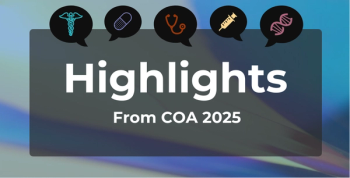
Dr Eleanor Perfetto Outlines Criticisms of the QALY
Eleanor M. Perfetto, PhD, MS, senior vice president of Strategic Initiatives for the National Health Council, discusses criticisms of the quality-adjusted life year (QALY) and what factors the measure does not take into account.
Eleanor M. Perfetto, PhD, MS, senior vice president of Strategic Initiatives for the National Health Council, discusses criticisms of the quality-adjusted life year (QALY) and what factors the measure does not take into account.
Transcript
What are some criticisms of the QALY measure, and what factors does the measure not take into account that some argue it should?
Some of the limitations that the QALYs have are things like potentially being discriminatory against people who are older or people who have severe illnesses or disabilities, so those are things that need to be taken into consideration. Very often the QALY does not take into account patient views. So it’s really important that if a value assessment or a health technology assessment is going to be conducted that’s going to be using a QALY, the entire assessment should have patient input into it.
From the patient perspective, what concerns do they have with the QALY, and have there been efforts to try and include the patient voice into these measures?
One of the concerns that patients and patient groups have about the use of the QALY is that it might be used to prevent access to care or limited access to care, so that’s a major concern that if a QALY is being used by someone who is making a decision, that it be used in context with other elements and not alone and that a QALY shouldn’t be the decision maker.
In value assessment or in health technology assessment, there have been some efforts to include the patient voice. It’s really important that it be incorporated into the entire process and not be a check the box exercise that only happens at one point during the evaluation that’s happening. So, it’s really important that patients are at the table start to finish and having their voice heard.
Newsletter
Stay ahead of policy, cost, and value—subscribe to AJMC for expert insights at the intersection of clinical care and health economics.








